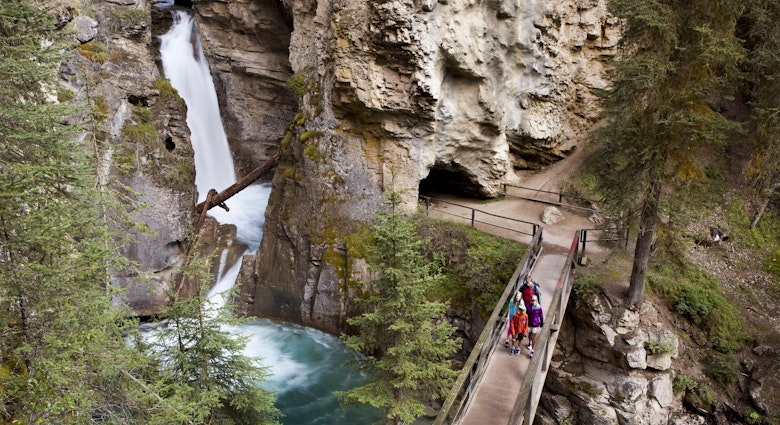As diverse as it is enchanting, Mexico is a year-round destination. This 32-state nation boasts glistening coastlines, numerous microclimates and an astonishingly varied terrain.
For 365 days a year, the sun reigns supreme on the pristine beaches of Cancún and Playa del Carmen on the Yucatán Peninsula, while inland city gems like Guanajuato and San Miguel de Allende, located in the temperate highlands, provide respite from scorching summers.
Over in the state of Chihuahua, adventurers relish the grandiose and gobsmacking Copper Canyon in spring and fall, and the country’s cultural heartland, Mexico City, is perennially bustling with life.
Whether you're a beach lover, culture maven, history buff or foodie, Mexico has a perfect time for you to experience its countless treasures. In this guide, we'll dissect the seasons, local festivals and regional nuances to help you pinpoint the best time to go to Mexico, ensuring your trip is as unforgettable as the country itself.

December to April is the best time for dry weather and party crowds
High season in Mexico coincides with the dry season from November to March (the rainy season is from June to October). These pleasantly dry months bring numerous winter escapees from colder countries, and it is the best time to travel to Mexico if you plan to spend a lot of time outdoors and in nature.
On the Baja Peninsula, flowers bloom, things get green, big waves delight surfers, and swimming with whale sharks is possible (from October through April). In the Northern Central Highlands, it's a fantastic time for excursions to waterfalls and rivers, while in Oaxaca, these are the best months for hiking.
Bring a sweater for high-altitude destinations like San Cristobal de las Casas in Chiapas, which can be chilly at night and in the morning. In the Western Central Highlands, the forests of the Reserva de la Biosfera Santuario Mariposa Monarca (Monarch Butterfly Biosphere Reserve) turn orange as millions of large monarch butterflies winter there from late October to mid-March.
November, December and January are the most expensive months to fly to Mexico. Expect crowded attractions and population swells in destinations like Tulum, which is particularly busy before New Year’s Eve and on the first week of the year when massive electronic music festivals fill the calendar.
February is the best month for whale-watching around the Baja Peninsula, and March is the Vernal Equinox when visitors mob Chichén Itzá (it happens in autumn as well) to see shadows that resemble a serpent ascend or descend the El Castillo pyramid. Archaeological sites like Teotihuacán north of Mexico City and Guachimontones west of Guadalajara are also popular spring equinox pilgrimages.
In March and April, many US students spend their spring break in coastal hotspots, including Cancún, Puerto Vallarta or Cabo San Lucas, for days of over-the-top partying. Whether you wish to join or avoid the revelry, take note of potential fare increases during this time.
Semana Santa (Easter Week), which can be in March or April, is Mexico’s major holiday week of the year, with tourist accommodations and transportation packed – many businesses also shut down in inland cities. Along with Christmas, Easter fares in Mexico can be as much as double the typical rate.

May to June is the best time for sunseekers, fewer crowds and low prices
Mexico experiences two low seasons: May and June, and then September through November. If you’re looking to score great travel deals, these might be the cheapest months to vacation in Mexico.
In May, temperatures reach annual peaks in cities such as Mérida (average daily high 95°F), Guadalajara (87°C), Oaxaca City (86°C) and Mexico City (79°C). You might be surprised to learn that Cinco de Mayo is not observed with zealous fanfare throughout Mexico, though it is a public holiday. The main destination for celebration on May 5th is Puebla, where a battle between the Mexican army and French soldiers is re-enacted.
June is the start of the rainy season in Mexico, as well as the hurricane season, which lasts until November. The highest chance of encountering a hurricane, however, is between August and October.
July and August are the best months for surfing and wildlife encounters
It’s hot nearly everywhere in Mexico during the summer. Countless spots in the Mexican Riviera (Mexico’s Pacific coast region), including Puerto Escondido with its legendary Mexican Pipeline, enjoy superb swells from April/May to October/November. June to August generally sees the biggest waves.
If you love turtles, the best time to travel to Puerto Vallarta is from July until December, when you can attend one of many baby turtle releases held by a handful of hotels. For whale shark spotting, these gentle giants gather off the coast of Cancún and Riviera Maya towns between mid-May and mid-September, but the best time to see them is July or August.
The summer might not be the best time to visit Riviera Maya or Cancún, though – not only is it oppressively hot, but many beaches are covered in sargassum (brown seaweed). Vacationing Mexicans from the rest of the country also flock to these beaches, which makes hotel rates rise. Beaches on the Mexican Riviera are never affected by sargassum.

September to November is excellent for cultural showcases and inland city escapades
The second low season, from September to November, is a terrific time for inland explorations and tastes of culture. Mexican families feast on Chiles en Nogada (chilies in walnut sauce) to celebrate Día de la Independencia (Independence Day), which ushers in lively patriotic celebrations on the 15th and 16th of September.
Over 10 days in September, Guadalajara hosts the charming, colorful and delectable International Mariachi and Charrería Festival, when more than 500 mariachis perform and the National Charro Championship takes place (charrería is Mexico’s national sport).
With the hurricane season in full swing on the Yucatán Peninsula and Mexico’s coasts, it’s rainy in most places, with poor visibility for Caribbean divers in September. However, inland Mexico tells a different story.
There are spots of rain in Mexico City, but the mild weather is perfect for wandering around the city. October, along with November and March, is one of the best months to visit northwest Mexico’s spectacular canyon country, with temperatures not too hot at the bottom of the canyons, nor too cold at the top.
At the start of November, Día de los Muertos (Day of the Dead) brings parades, floats, altars and all-night vigils to cities and towns all over Mexico. As the jubilant epicenter of this celebration, this is one of the best times to visit Oaxaca City.












